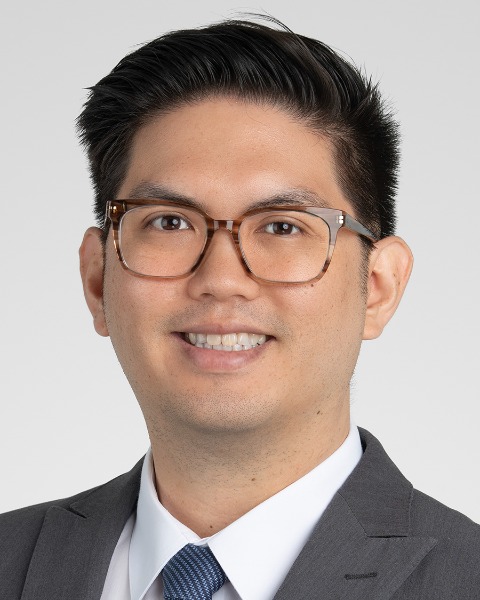ISMRM - SCMR Workshop
Oral Abstract 1: Inline Automated Post-processing and On-scanner Diffusion Tensor Maps Visualization for Cardiac Diffusion Tensor Imaging Using FIRE
- YL
Yuchi Liu, PhD
Research Scientist
Siemens Medical Solutions USA, Inc. - DK
Danielle Kara, PhD
Staff Scientist
Cleveland Clinic - KC
Kelvin Chow, PhD
MR Collaboration Scientist
Siemens Healthcare Ltd., Canada, Canada - DH
David Han, BSc
Medical Student
Case Western Reserve University School of Medicine, Cardiovascular Innovation Research Center - NJ
Ning Jin, PhD
Senior Key Expert
Siemens Healthineers - PS
Peter Speier, PhD
Research Professional
Siemens Healthineers, Germany 
Deborah Kwon, MD, FSCMR
Director of Cardiac MRI
Cleveland Clinic- XB
Xiaoming Bi, PhD
Director, Cardiovascular MR Collaborations
Siemens Medical Solutions USA, Inc. 
Christopher Nguyen, PhD, FSCMR, FACC
Director, Cardiovascular Innovation Research Center
Cleveland Clinic- YL
Yuchi Liu, PhD
Research Scientist
Siemens Medical Solutions USA, Inc.
Primary Author(s)
Co-Author(s)
Presenting Author(s)
Spin-echo Cardiac diffusion tensor imaging (cDTI)1 is signal-to-noise ratio (SNR) limited, in part due to the long motion-compensated (velocity and acceleration, M1+M2) diffusion encoding gradient waveforms that extend echo times (TEs). Ultra-high-performance MRI systems (e.g. Gmax=200mT/m, Smax=200T/m/s) are a great opportunity for cDTI to minimize TEs and increase SNR; however, peripheral nerve stimulation (PNS) from slewing to higher gradient thresholds needs to be managed. Gradient waveform optimization, such as the open-source Gradient Optimization toolbox (GrOpt2 ), provides more time-efficient gradient waveforms while managing constraints.
The wider adoption of cDTI and SNR-efficient optimized gradient waveform approaches are limited by specialized sequence development in proprietary vendor software. Pulseq3 is another open-source toolbox that enables vendor-neutral pulse sequence programming in Matlab or Python,4 lowering the barrier for design.
The purpose of this work is to demonstrate an open-source approach to spin-echo cDTI data collection using a combination of GrOpt and Pulseq.
Methods:
In simulation, the minimum TE achievable for a spin-echo cDTI sequence was simulated for an ultra-high-performance system (Gmax=200mT/m) and commodity system(Gmax=45mT/m) with conventional trapezoidal waveforms (TRAP) and GrOpt waveforms. The following parameters were used: b-value=[250, 500, 750, 1000] s/mm2, RF pulse durations of T90 = 3ms, T180 = 5ms, gradient moment nulling = [M1+M2], time to TE=[10, 20, 30, 40, 50] ms, PNS threshold5 (PNSthresh)=0.8. TE differences (∆TEmin) and percent signal gain of myocardium (T2=46ms) were reported.
A proof-of-concept, ECG-triggered, M1+M2 compensated, single-shot spin-echo diffusion echo-planar imaging (EPI) sequence (ramp-sampled6) was implemented in Pulseq with GrOpt waveforms (Table-1 and Fig-2). The phase-encoding (PE) blip gradient was turned off for the first excitation to acquire a reference to correct for odd and even PE line shifts. Two non-diffusion-weighted images were then acquired with dual polarities for linear phase correction6 followed by diffusion-weighted images. A separate two-shot EPI calibration scan was acquired right before the imaging scans. Image reconstruction included ramp sampling interpolation, ghost correction, GRAPPA reconstruction, and homodyne Partial Fourier reconstruction. Mid-systolic imaging was targeted based on the ECG signal and localizer images. Two imaging protocols were tested (Table-1).
Results: In simulation, GrOpt consistently maximized hardware usage across all b-values and readouts, outperforming conventional trapezoidal (TRAP) waveforms. TE reductions over 50 ms led to estimated signal gains up to 200% (Fig-1). We integrated GrOpt into a single-shot EPI Pulseq sequence (Fig-2). Preliminary images show successful diffusion-weighting, with potential improvements in fat saturation and trigger delay selection.
Conclusion: GrOpt utilizes dynamic slewing to limit PNS while reducing TE durations. Our proof-of-concept sequence development and data acquisition shows promise of optimized open-source cDTI. Future work will include sequence design improvements (integrating reference and calibration scans, improved fat saturation) and exploring simultaneous ECG-triggering and respiratory navigating to allow for free-breathing acquisitions.
{
Funding: AHA.23PRE1018442, R01 HL152256, NSF 2205103, and ISMRM Research Exchange}

